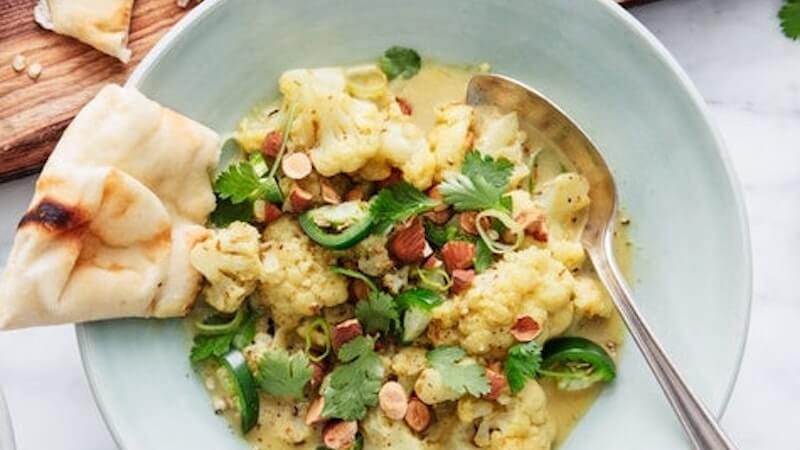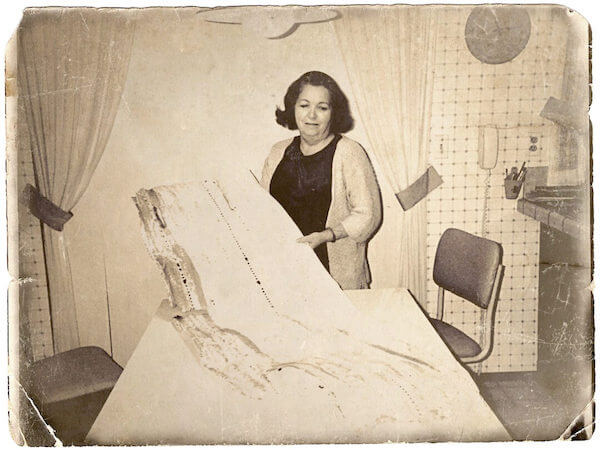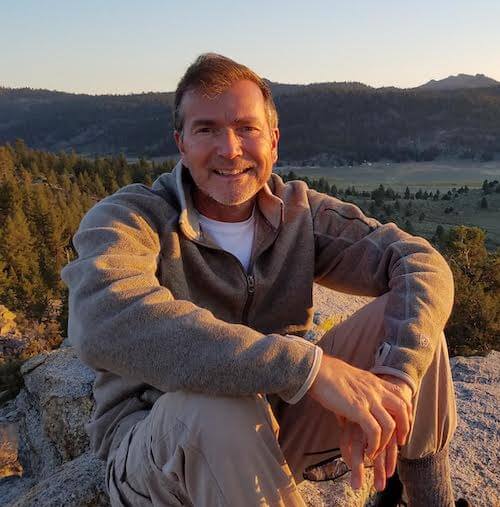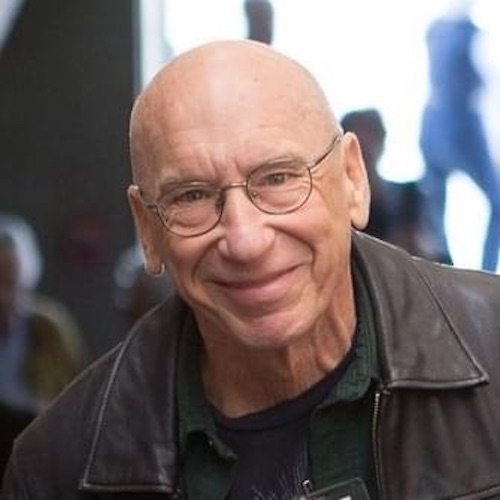
Many consider that a meal of any kind is not complete without bread of some kind — to fill you up, soak up good flavors, or transfer the last drops of appetizing sauce residue off your plate to your tongue. This fall and winter, as we reflect upon this same time last year, we are reminded to be grateful for the ability to see family and friends over a meal at all. Let us gather (safely) and break bread.
Different from table to table, there isn’t a place on earth lacking some version of bread served with meals. Bread itself can represent memories, traditions, and sometimes complicated histories. In other words, bread is anything but just bread.
Challah bread is famously braided to represent its intertwining with Jewish history and receiving a daily portion from heaven. In Turkey, bread is an act of kindness; one might buy two loaves of bread and tell the shopkeeper that the other is askıda ekmek, a tradition of paying it forward to those who cannot afford bread. Frybread is a complicated symbol of Native American culture, created from survival after the U.S. government forced Indians to relocate to New Mexico. During the Opium War in 1840, bread was mass produced in Japan to feed hungry soldiers and eventually turned into Japan’s own anpan (red bean bread). Ethiopia’s injera bread — made from an indigenous grain, teff — represents an authentic culture uninfluenced by outside forces as one of two African nations that were never colonized.
Halfway between the south Bay Area and Big Sur, bread represents childhood at Atoria’s Family Bakery in Gilroy. Atoria grew up in the Assyrian villages near Mesopotamia (thought to be related to the roots of the first breads), watching her mom and grandmother bake flatbread in a rustic hearth oven. Today, Atoria sells her traditional flatbreads — lavash, naan, and pita, up and down the west coast and online.

Just in time for your next casual get together, bedazzle your naan from her bakery or any other with almonds, and serve it with a coconut, vegan curry. This nourishing recipe is filling, hearty, and healthy. It’ll fill you up and inspire you to soak up all the good flavors on your plate… and every last drop of togetherness as you break bread.
Thank you to Atoria’s Family Bakery for sharing this recipe, so we could share it with you.
Makes 3 servings
Prep time: 30 minutes
Ingredients
Instructions

“Remembering to be as self compassionate as I can and praying to the divine that we're all a part of.”
–Aaron
“Prayer, reading, meditation, walking.”
–Karen
“Erratically — which is an ongoing stream of practice to find peace.”
–Charles
“Try on a daily basis to be kind to myself and to realize that making mistakes is a part of the human condition. Learning from our mistakes is a journey. But it starts with compassion and caring. First for oneself.”
–Steve
“Physically: aerobic exercise, volleyball, ice hockey, cycling, sailing. Emotionally: unfortunately I have to work to ‘not care’ about people or situations which may end painfully. Along the lines of ‘attachment is the source of suffering’, so best to avoid it or limit its scope. Sad though because it could also be the source of great joy. Is it worth the risk?“
–Rainer


“It's time for my heart to be nurtured on one level yet contained on another. To go easy on me and to allow my feelings to be validated, not judged harshly. On the other hand, to let the heart rule with equanimity and not lead the mind and body around like a master.”
–Suzanne
“I spend time thinking of everything I am grateful for, and I try to develop my ability to express compassion for myself and others without reservation. I take time to do the things I need to do to keep myself healthy and happy. This includes taking experiential workshops, fostering relationships, and participating within groups which have a similar interest to become a more compassionate and fulfilled being.“
–Peter


“Self-forgiveness for my own judgments. And oh yeah, coming to Esalen.”
–David B.
“Hmm, this is a tough one! I guess I take care of my heart through fostering relationships with people I feel connected to. Spending quality time with them (whether we're on the phone, through messages/letters, on Zoom, or in-person). Being there for them, listening to them, sharing what's going on with me, my struggles and my successes... like we do in the Esalen weekly Friends of Esalen Zoom sessions!”
–Lori

“I remind myself in many ways of the fact that " Love is all there is!" LOVE is the prize and this one precious life is the stage we get to learn our lessons. I get out into nature, hike, camp, river kayak, fly fish, garden, I create, I dance (not enough!), and I remain grateful for each day, each breath, each moment. Being in the moment, awake, and remembering the gift of life and my feeling of gratitude for all of creation.”
–Steven
“My physical heart by limiting stress and eating a heart-healthy diet. My emotional heart by staying in love with the world and by knowing that all disappointment and loss will pass.“
–David Z.
Today, September 29, is World Heart Day. Strike up a conversation with your own heart and as you feel comfortable, encourage others to do the same. As part of our own transformations and self-care, we sometimes ask for others to illuminate and enliven our hearts or speak our love language.
What if we could do this for ourselves too, even if just for today… or to start a heart practice, forever?

Many consider that a meal of any kind is not complete without bread of some kind — to fill you up, soak up good flavors, or transfer the last drops of appetizing sauce residue off your plate to your tongue. This fall and winter, as we reflect upon this same time last year, we are reminded to be grateful for the ability to see family and friends over a meal at all. Let us gather (safely) and break bread.
Different from table to table, there isn’t a place on earth lacking some version of bread served with meals. Bread itself can represent memories, traditions, and sometimes complicated histories. In other words, bread is anything but just bread.
Challah bread is famously braided to represent its intertwining with Jewish history and receiving a daily portion from heaven. In Turkey, bread is an act of kindness; one might buy two loaves of bread and tell the shopkeeper that the other is askıda ekmek, a tradition of paying it forward to those who cannot afford bread. Frybread is a complicated symbol of Native American culture, created from survival after the U.S. government forced Indians to relocate to New Mexico. During the Opium War in 1840, bread was mass produced in Japan to feed hungry soldiers and eventually turned into Japan’s own anpan (red bean bread). Ethiopia’s injera bread — made from an indigenous grain, teff — represents an authentic culture uninfluenced by outside forces as one of two African nations that were never colonized.
Halfway between the south Bay Area and Big Sur, bread represents childhood at Atoria’s Family Bakery in Gilroy. Atoria grew up in the Assyrian villages near Mesopotamia (thought to be related to the roots of the first breads), watching her mom and grandmother bake flatbread in a rustic hearth oven. Today, Atoria sells her traditional flatbreads — lavash, naan, and pita, up and down the west coast and online.

Just in time for your next casual get together, bedazzle your naan from her bakery or any other with almonds, and serve it with a coconut, vegan curry. This nourishing recipe is filling, hearty, and healthy. It’ll fill you up and inspire you to soak up all the good flavors on your plate… and every last drop of togetherness as you break bread.
Thank you to Atoria’s Family Bakery for sharing this recipe, so we could share it with you.
Makes 3 servings
Prep time: 30 minutes
Ingredients
Instructions

“Remembering to be as self compassionate as I can and praying to the divine that we're all a part of.”
–Aaron
“Prayer, reading, meditation, walking.”
–Karen
“Erratically — which is an ongoing stream of practice to find peace.”
–Charles
“Try on a daily basis to be kind to myself and to realize that making mistakes is a part of the human condition. Learning from our mistakes is a journey. But it starts with compassion and caring. First for oneself.”
–Steve
“Physically: aerobic exercise, volleyball, ice hockey, cycling, sailing. Emotionally: unfortunately I have to work to ‘not care’ about people or situations which may end painfully. Along the lines of ‘attachment is the source of suffering’, so best to avoid it or limit its scope. Sad though because it could also be the source of great joy. Is it worth the risk?“
–Rainer


“It's time for my heart to be nurtured on one level yet contained on another. To go easy on me and to allow my feelings to be validated, not judged harshly. On the other hand, to let the heart rule with equanimity and not lead the mind and body around like a master.”
–Suzanne
“I spend time thinking of everything I am grateful for, and I try to develop my ability to express compassion for myself and others without reservation. I take time to do the things I need to do to keep myself healthy and happy. This includes taking experiential workshops, fostering relationships, and participating within groups which have a similar interest to become a more compassionate and fulfilled being.“
–Peter


“Self-forgiveness for my own judgments. And oh yeah, coming to Esalen.”
–David B.
“Hmm, this is a tough one! I guess I take care of my heart through fostering relationships with people I feel connected to. Spending quality time with them (whether we're on the phone, through messages/letters, on Zoom, or in-person). Being there for them, listening to them, sharing what's going on with me, my struggles and my successes... like we do in the Esalen weekly Friends of Esalen Zoom sessions!”
–Lori

“I remind myself in many ways of the fact that " Love is all there is!" LOVE is the prize and this one precious life is the stage we get to learn our lessons. I get out into nature, hike, camp, river kayak, fly fish, garden, I create, I dance (not enough!), and I remain grateful for each day, each breath, each moment. Being in the moment, awake, and remembering the gift of life and my feeling of gratitude for all of creation.”
–Steven
“My physical heart by limiting stress and eating a heart-healthy diet. My emotional heart by staying in love with the world and by knowing that all disappointment and loss will pass.“
–David Z.
Today, September 29, is World Heart Day. Strike up a conversation with your own heart and as you feel comfortable, encourage others to do the same. As part of our own transformations and self-care, we sometimes ask for others to illuminate and enliven our hearts or speak our love language.
What if we could do this for ourselves too, even if just for today… or to start a heart practice, forever?

Many consider that a meal of any kind is not complete without bread of some kind — to fill you up, soak up good flavors, or transfer the last drops of appetizing sauce residue off your plate to your tongue. This fall and winter, as we reflect upon this same time last year, we are reminded to be grateful for the ability to see family and friends over a meal at all. Let us gather (safely) and break bread.
Different from table to table, there isn’t a place on earth lacking some version of bread served with meals. Bread itself can represent memories, traditions, and sometimes complicated histories. In other words, bread is anything but just bread.
Challah bread is famously braided to represent its intertwining with Jewish history and receiving a daily portion from heaven. In Turkey, bread is an act of kindness; one might buy two loaves of bread and tell the shopkeeper that the other is askıda ekmek, a tradition of paying it forward to those who cannot afford bread. Frybread is a complicated symbol of Native American culture, created from survival after the U.S. government forced Indians to relocate to New Mexico. During the Opium War in 1840, bread was mass produced in Japan to feed hungry soldiers and eventually turned into Japan’s own anpan (red bean bread). Ethiopia’s injera bread — made from an indigenous grain, teff — represents an authentic culture uninfluenced by outside forces as one of two African nations that were never colonized.
Halfway between the south Bay Area and Big Sur, bread represents childhood at Atoria’s Family Bakery in Gilroy. Atoria grew up in the Assyrian villages near Mesopotamia (thought to be related to the roots of the first breads), watching her mom and grandmother bake flatbread in a rustic hearth oven. Today, Atoria sells her traditional flatbreads — lavash, naan, and pita, up and down the west coast and online.

Just in time for your next casual get together, bedazzle your naan from her bakery or any other with almonds, and serve it with a coconut, vegan curry. This nourishing recipe is filling, hearty, and healthy. It’ll fill you up and inspire you to soak up all the good flavors on your plate… and every last drop of togetherness as you break bread.
Thank you to Atoria’s Family Bakery for sharing this recipe, so we could share it with you.
Makes 3 servings
Prep time: 30 minutes
Ingredients
Instructions

“Remembering to be as self compassionate as I can and praying to the divine that we're all a part of.”
–Aaron
“Prayer, reading, meditation, walking.”
–Karen
“Erratically — which is an ongoing stream of practice to find peace.”
–Charles
“Try on a daily basis to be kind to myself and to realize that making mistakes is a part of the human condition. Learning from our mistakes is a journey. But it starts with compassion and caring. First for oneself.”
–Steve
“Physically: aerobic exercise, volleyball, ice hockey, cycling, sailing. Emotionally: unfortunately I have to work to ‘not care’ about people or situations which may end painfully. Along the lines of ‘attachment is the source of suffering’, so best to avoid it or limit its scope. Sad though because it could also be the source of great joy. Is it worth the risk?“
–Rainer


“It's time for my heart to be nurtured on one level yet contained on another. To go easy on me and to allow my feelings to be validated, not judged harshly. On the other hand, to let the heart rule with equanimity and not lead the mind and body around like a master.”
–Suzanne
“I spend time thinking of everything I am grateful for, and I try to develop my ability to express compassion for myself and others without reservation. I take time to do the things I need to do to keep myself healthy and happy. This includes taking experiential workshops, fostering relationships, and participating within groups which have a similar interest to become a more compassionate and fulfilled being.“
–Peter


“Self-forgiveness for my own judgments. And oh yeah, coming to Esalen.”
–David B.
“Hmm, this is a tough one! I guess I take care of my heart through fostering relationships with people I feel connected to. Spending quality time with them (whether we're on the phone, through messages/letters, on Zoom, or in-person). Being there for them, listening to them, sharing what's going on with me, my struggles and my successes... like we do in the Esalen weekly Friends of Esalen Zoom sessions!”
–Lori

“I remind myself in many ways of the fact that " Love is all there is!" LOVE is the prize and this one precious life is the stage we get to learn our lessons. I get out into nature, hike, camp, river kayak, fly fish, garden, I create, I dance (not enough!), and I remain grateful for each day, each breath, each moment. Being in the moment, awake, and remembering the gift of life and my feeling of gratitude for all of creation.”
–Steven
“My physical heart by limiting stress and eating a heart-healthy diet. My emotional heart by staying in love with the world and by knowing that all disappointment and loss will pass.“
–David Z.
Today, September 29, is World Heart Day. Strike up a conversation with your own heart and as you feel comfortable, encourage others to do the same. As part of our own transformations and self-care, we sometimes ask for others to illuminate and enliven our hearts or speak our love language.
What if we could do this for ourselves too, even if just for today… or to start a heart practice, forever?